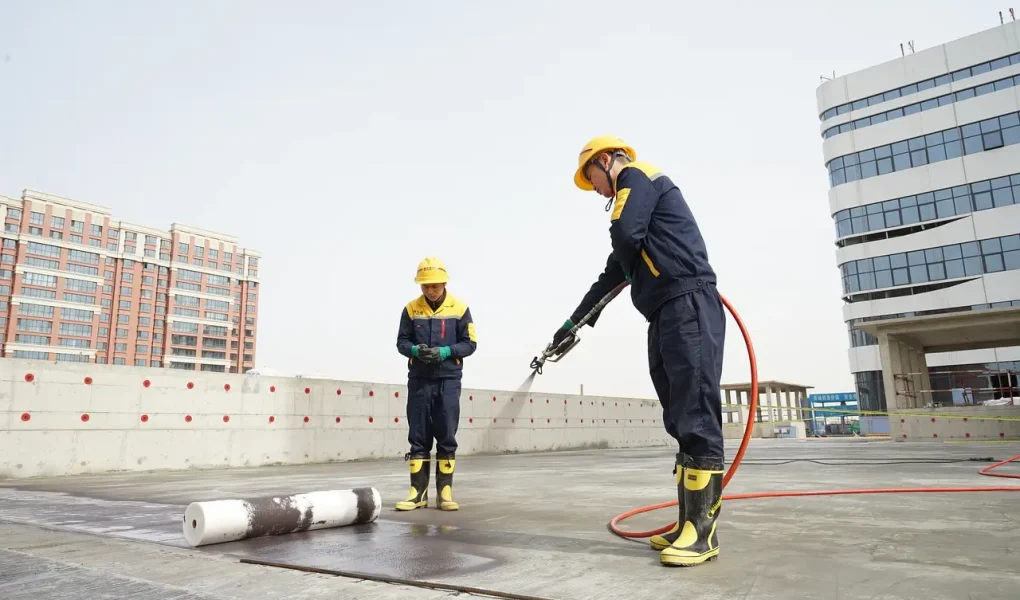Winter can be especially harsh on basements. With melting snow, freezing temperatures, and increased soil moisture, water often finds its way into the most vulnerable parts of your home. A wet basement can lead to mold growth, damaged belongings, and expensive repairs. That is why winter is the best time to take preventative measures. This guide outlines practical, effective fixes to keep your basement dry and protected throughout the cold season. By addressing potential issues proactively, homeowners can safeguard their property, maintain a healthy living environment, and avoid the stress and financial burden of water damage. Whether you live in a region with heavy snowfall or experience occasional freeze-thaw cycles, these strategies are tailored to ensure your basement remains a safe and dry space all winter long.
Identify the Sources of Basement Moisture
Before applying any solution, understand where the moisture comes from. During winter, the main culprits are:
-
Melting snow that pools near your foundation: As temperatures fluctuate, snow melts and accumulates around your home’s base, increasing the risk of seepage if drainage is inadequate.
-
Clogged or frozen gutters leading to overflow: Ice dams or debris can block gutters, causing water to spill over and run down foundation walls.
-
Hydrostatic pressure from saturated soil: Wet soil exerts pressure on basement walls, forcing water through cracks or porous materials.
-
Condensation due to poor air circulation: Warm, humid air inside the basement can condense on cold surfaces, creating dampness even without external leaks.
Each of these can let water seep into your basement, especially if there are structural weaknesses. Identifying the source is the first step toward effective prevention. For instance, if you notice water pooling near your foundation after a snowmelt, the issue might stem from poor grading or gutter issues. Regular inspections during winter months can help pinpoint these vulnerabilities early, allowing for timely intervention before significant damage occurs.
Focus on Foundation Crack Repair
Cracks in your foundation walls or floor provide a direct route for water intrusion. Early foundation crack repair is critical to avoid worsening damage during freeze-thaw cycles, a common phenomenon in winter that can expand small cracks into larger ones. Water seeping into these fissures freezes, expands, and exacerbates the problem, leading to structural instability over time.
Look for visible cracks, damp spots, or flaking paint as telltale signs. Minor cracks can be filled using epoxy or polyurethane injection methods, which are cost-effective DIY options for homeowners with basic skills. These sealants penetrate deep into the crack, hardening to block water entry. For wider or deeper cracks, professional solutions like carbon fiber straps or hydraulic cement may be necessary. Carbon fiber straps reinforce the wall, while hydraulic cement expands as it cures, filling larger gaps effectively. Addressing cracks quickly helps stop water before it enters, preserving the integrity of your basement and preventing costly repairs down the line. Regular monitoring during winter is advisable, as temperature changes can reveal new or expanding cracks that need attention.
Improve Exterior Drainage
A major reason for basement water issues is poor drainage. Start by cleaning your gutters and downspouts to ensure water is directed away from your home. Clogged gutters, often filled with leaves or ice, can cause overflow that saturates the soil near your foundation. Downspouts should release water at least six feet from the foundation—use extensions if needed—to prevent water from pooling close to the basement walls.
Check the grading of the soil around your home. The soil should be graded to slope away from the foundation at a minimum of 1 inch per foot for the first 6 feet to avoid water accumulation. If the ground slopes toward the house, consider regrading or adding topsoil to redirect runoff. Also, avoid piling snow near basement windows or the foundation line, as melting snow can create localized flooding. Installing French drains or a perimeter drainage system can further enhance exterior water management, particularly in areas with heavy snowfall. These steps not only protect your basement but also extend the lifespan of your foundation by reducing moisture-related stress.
Install or Test Your Sump Pump
A sump pump protects your basement from groundwater by collecting and pumping it away. If you already have one, test it by pouring water into the sump pit and checking if it activates properly. A functioning sump pump should remove water efficiently, preventing it from rising to floor level. Winter storms can increase groundwater levels, making this system essential.
If you do not have one, consider installing a sump pump with a battery backup. This is especially important during winter storms, when power outages can disable electric systems just when they are most needed. A battery backup ensures continuous operation, safeguarding your basement during prolonged outages. Choose a model with adequate capacity for your basement size and local water table conditions, and have it professionally installed if you’re unsure about the process. Regular maintenance, such as cleaning the pump and checking the discharge line, is crucial to keep it operational throughout the season.
Seal Interior Walls and Floors
Concrete and masonry basement walls can absorb water if not sealed. Apply a waterproof sealant specifically designed for cold, damp environments. This creates a moisture barrier that reinforces your basement’s resistance to water entry, particularly during winter when humidity and temperature differences are pronounced. Look for products labeled for below-grade use, as they are formulated to withstand constant moisture exposure.
Before applying the product, ensure the surface is clean, dry, and free of loose material for better adhesion and performance. Use a wire brush to remove debris, and repair any cracks beforehand to maximize the sealant’s effectiveness. Apply multiple coats if recommended by the manufacturer, allowing adequate drying time between layers. This step not only prevents water infiltration but also reduces condensation, improving indoor air quality. For added protection, consider combining sealant with a dehumidifier to control internal moisture levels, especially in unheated basements.
Get Professional Basement Waterproofing Help
If you are dealing with recurring leaks or dampness, consult a basement waterproofing specialist. They can inspect your property, recommend appropriate solutions, and install systems like interior drainage or vapor barriers. Recurring issues often indicate underlying problems, such as poor exterior drainage or significant structural damage, that require expert intervention.
Investing in expert help ensures long-term protection and saves you from costly repairs later. Professionals can assess the extent of water pressure, identify hidden leaks, and install advanced systems like interior French drains or exterior waterproof membranes. They may also suggest upgrading insulation or ventilation to combat condensation. Choosing a licensed contractor with experience in winter conditions can provide peace of mind, ensuring your basement remains dry and functional. Request multiple quotes and check reviews to find a reliable service provider in your area.
Additional Tips for Winter Basement Care
Beyond the core strategies, consider these supplementary measures to enhance your basement’s winterproofing:
-
Insulate Pipes: Prevent freezing and bursting by insulating exposed water pipes with foam sleeves or heat tape.
-
Improve Ventilation: Use exhaust fans or open windows briefly (if safe) to reduce condensation, especially after snowmelt.
-
Monitor Humidity: Keep indoor humidity below 50% with a hygrometer and dehumidifier to prevent mold growth.
-
Store Items Safely: Elevate valuables on shelves or pallets to avoid water damage if minor leaks occur.
These steps create a comprehensive defense against winter moisture, protecting both your basement and its contents.
Benefits of Winterproofing Your Basement
Winterproofing your basement offers numerous advantages. A dry basement prevents mold and mildew, which can cause health issues like allergies or respiratory problems. It also protects stored items—furniture, electronics, or seasonal decorations—from water damage, preserving their value. Moreover, a well-maintained basement can increase your home’s resale value, appealing to buyers who prioritize a solid foundation. Financially, preventative measures are far less expensive than emergency repairs, which can escalate quickly with water-related damage. By acting now, you avoid the inconvenience of dealing with flooded basements during the coldest months.
Long-Term Maintenance Plan
Winterproofing is not a one-time task. Develop a long-term maintenance plan to keep your basement dry year-round. Schedule annual inspections in late fall to prepare for winter, checking gutters, sump pumps, and foundation cracks. Keep a log of repairs and sealant applications to track effectiveness over time. Engage a professional every few years for a thorough assessment, especially after severe weather events. This proactive approach ensures your basement remains a reliable part of your home, free from water-related concerns.
Taking these steps now will help you avoid damage, maintain property value, and enjoy a dry, healthy basement all winter long. Do not wait for water to appear—fix the issues before they start. By identifying moisture sources, repairing cracks, improving drainage, installing sump pumps, sealing walls, and seeking professional help when needed, you can transform your basement into a winter-ready space. Start this process early in the season to enjoy peace of mind and a protected home throughout the cold months and beyond.




